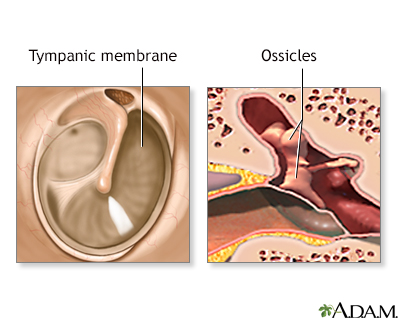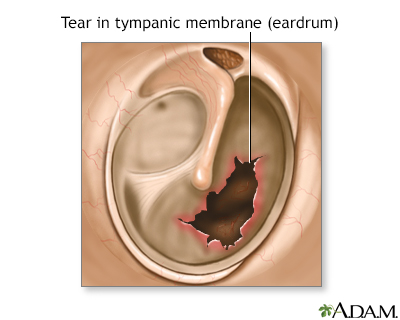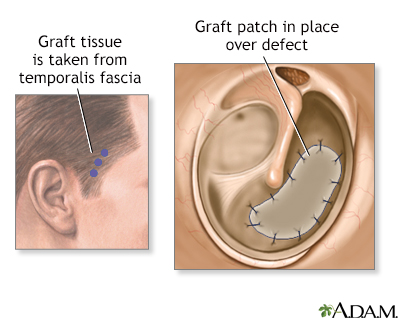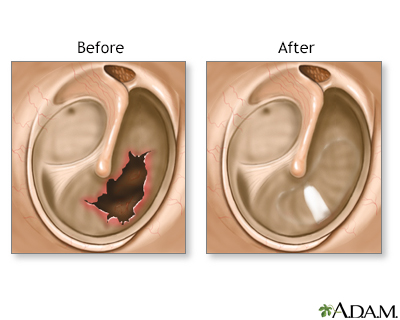Health exams for: #AGEGROUP#
The following exams, tests, and procedures are recommended for #AGEGROUPLOWER#.#FEMALETEXT#
Select a link from the list below to learn how and why each test is performed, as well how to prepare for it.

The following exams, tests, and procedures are recommended for #AGEGROUPLOWER#.#FEMALETEXT#
Select a link from the list below to learn how and why each test is performed, as well how to prepare for it.




The tympanic membrane (eardrum) separates the outer ear from the middle ear. The membrane vibrates when sound waves strike it, beginning the process that converts the sound wave into a nerve impulse that travels to the brain.
The tympanic membrane (eardrum) separates the outer ear from the middle ear. The membrane vibrates when sound waves strike it, beginning the process ...
Ruptured or perforated eardrums are usually caused by middle-ear infections or trauma (for example, an object in the ear, a slap on the ear, explosions, or repeated, excessive ear pressure from flying or diving). If healing does not occur with antibiotics or other non-operative treatment, surgery may be necessary. Chronic middle ear infections are described as 5 or more ear infections in a year, or 3 or more ear infections a year over a two-year period. Signs of chronic ear infections include persistent ear pain, ear drainage, or hearing loss (over a 3-month period).
Ruptured or perforated eardrums are usually caused by middle-ear infections or trauma (for example, an object in the ear, a slap on the ear, explosio...
While the patient is deep asleep and pain-free, (general anesthesia), the surgeon grafts a small patch from the fascia of the forehead muscle (temporalis) onto the eardrum. This graft is used to repair the tear. For problems with the small bones (ossicles), the surgeon will use an operating microscope to view and repair the chain of small bones using plastic devices or ossicles from a donor.
While the patient is deep asleep and pain-free, (general anesthesia), the surgeon grafts a small patch from the fascia of the forehead muscle (tempor...
In most cases, the operation relieves pain and infection symptoms completely. Hearing loss is usually minor. However, if the ossicles require repair, outcome may be less optimal. Patients usually leave the hospital the same day. After surgery, it is important to avoid getting water in the ear. Use a hair cap when showering for a few weeks.
In most cases, the operation relieves pain and infection symptoms completely. Hearing loss is usually minor. However, if the ossicles require repair,...
Review Date: 5/30/2022
Reviewed By: Josef Shargorodsky, MD, MPH, Johns Hopkins University School of Medicine, Baltimore, MD. Also reviewed by David C. Dugdale, MD, Medical Director, Brenda Conaway, Editorial Director, and the A.D.A.M. Editorial team.



